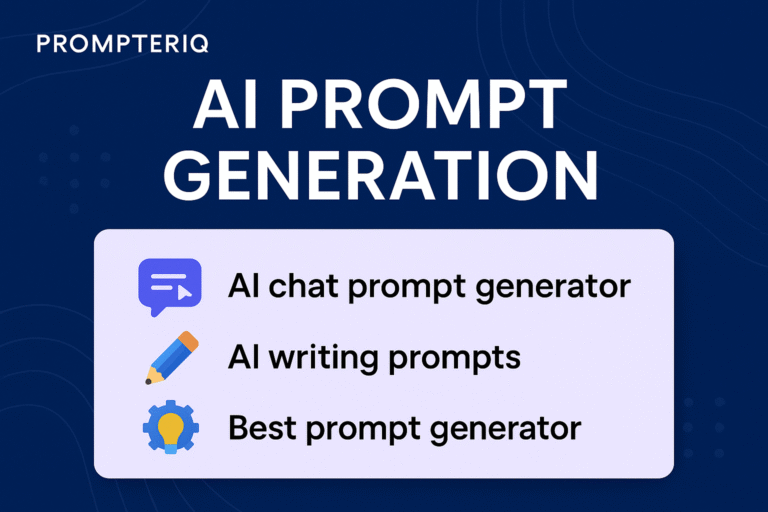How to Write Good Prompts for ChatGPT
p>How to write good prompts for ChatGPT is a detailed and intricate process that requires a comprehensive understanding of language, context, and the capabilities of the AI model itself. Writing effective prompts is crucial for obtaining accurate, informative, and relevant responses from ChatGPT. A well-crafted prompt can significantly enhance the quality of the output, making it more coherent, engaging, and useful for various applications. To begin with, it’s essential to have a clear understanding of what you want to achieve with your prompt. This could range from seeking information on a specific topic, generating creative content, or even translating text from one language to another. The key to a good prompt is specificity, clarity, and providing enough context for ChatGPT to understand the task at hand. For instance, instead of asking a generic question like “What is AI?”, a more effective prompt would be “Explain the concept of artificial intelligence, its history, current applications, and future prospects in the field of technology.” This not only gives ChatGPT a clear direction but also sets the stage for a more detailed and informative response. Furthermore, understanding the limitations and capabilities of ChatGPT is vital. Knowing what the model can and cannot do helps in crafting prompts that are within its scope, thereby increasing the likelihood of receiving a satisfactory response. This involves being aware of its training data, the types of tasks it’s designed for, and any specific guidelines or constraints provided by its developers. By combining this knowledge with a thoughtful and well-structured approach to prompt writing, users can unlock the full potential of ChatGPT and leverage its capabilities for a wide range of purposes, from educational and professional applications to creative projects and personal interests.<<
Understanding the Basics of Prompt Writing
 <<
<<
Understanding the basics of prompt writing is fundamental to eliciting high-quality responses from ChatGPT. This involves more than just typing out a question or statement; it requires a thoughtful and strategic approach. One of the first steps is to define the task clearly. Whether it’s asking for information, generating text, or completing a specific assignment, the prompt should be designed in a way that leaves no ambiguity about what is expected. For example, if the task is to write a story, the prompt should include details about the genre, the characters involved, the setting, and any specific plot elements that need to be included. This level of detail helps ChatGPT in generating a narrative that is not only engaging but also meets the specific requirements outlined in the prompt. Additionally, providing context is crucial. This could involve giving background information on the topic, specifying the tone or style of the response, or even indicating the intended audience. Contextualizing the prompt in this manner enables ChatGPT to produce responses that are tailored to the user’s needs, making the output more relevant and useful. It’s also important to keep in mind the length and complexity of the prompt. While detailed prompts can lead to more accurate responses, overly long or complicated prompts can confuse the model, leading to subpar outputs. Finding the right balance between providing enough information and keeping the prompt concise is a skill that develops over time with practice and experience.<<
Importance of Specificity and Clarity
<<
The importance of specificity and clarity in prompt writing cannot be overstated. A prompt that is vague or open-ended can lead to responses that are generic or off-topic. On the other hand, a prompt that is specific, clear, and well-defined can guide ChatGPT towards producing a response that is accurate, relevant, and directly addresses the user’s query. For instance, asking “How does climate change affect biodiversity?” is a more effective prompt than “What is climate change?” because it seeks specific information on a particular aspect of the topic. This specificity allows ChatGPT to delve deeper into the subject matter, providing a more nuanced and detailed explanation that meets the user’s information needs. Moreover, clarity in prompts helps in avoiding misunderstandings. When the language is straightforward and easy to understand, ChatGPT can interpret the prompt more accurately, reducing the likelihood of misinterpretation and ensuring that the response aligns with the user’s expectations. This is particularly important in applications where precision is key, such as in legal, medical, or technical contexts, where the nuances of language can significantly impact the meaning and usefulness of the response.<<
Advanced Prompt Writing Techniques
 <<
<<
Advanced prompt writing techniques can further enhance the quality and relevance of responses from ChatGPT. One such technique is the use of priming. Priming involves providing ChatGPT with a sample of text or a few examples that illustrate the style, tone, or content desired in the response. This can be particularly useful for creative writing tasks or when generating content that needs to match a specific format or style. For example, if the goal is to write a poem in the style of a particular author, providing a few lines of their work as a primer can help ChatGPT in capturing the essence and tone of the author’s writing, leading to a more authentic and engaging poem. Another technique is to use iterative prompting, where the initial prompt is followed by subsequent prompts that refine or expand on the original query. This approach allows for a more interactive and dynamic engagement with ChatGPT, enabling users to explore topics in depth and receive more detailed and comprehensive responses. Furthermore, using specific keywords or phrases related to the topic can also improve the accuracy of the response. Keywords help ChatGPT in focusing on the core aspects of the topic, ensuring that the response is relevant and addresses the key points of interest.<<
Case Studies and Real-World Applications
<<
Case studies and real-world applications of effective prompt writing for ChatGPT are numerous and varied. In educational settings, well-crafted prompts can be used to generate personalized learning materials, such as customized textbooks or interactive study guides, tailored to the needs and learning style of individual students. In content creation, prompts can be designed to produce high-quality blog posts, articles, or social media content that engages audiences and communicates complex ideas in an accessible and compelling manner. For businesses, ChatGPT can be leveraged to automate customer service tasks, such as answering frequently asked questions or providing product information, using prompts that are tailored to the company’s brand voice and customer service strategy. Moreover, in creative fields, artists and writers can use ChatGPT as a collaborative tool, using prompts to generate ideas, develop characters, or even compose music. These applications demonstrate the versatility and potential of ChatGPT when used with well-designed prompts, highlighting the importance of mastering prompt writing skills for anyone looking to harness the capabilities of this powerful AI tool.<<
Step-by-Step Guide to Writing Effective Prompts
 <<
<<
A step-by-step guide to writing effective prompts for ChatGPT involves several key considerations. First, define the task or question clearly, ensuring that the prompt is specific and well-defined. Next, provide sufficient context, including any background information, specific requirements, or constraints that are relevant to the task. Then, consider the tone and style of the desired response, using priming or iterative prompting as needed to refine the output. It’s also crucial to review and refine the prompt, ensuring that it is concise, clear, and free of ambiguity. This process may involve testing the prompt with ChatGPT, analyzing the response, and making adjustments as necessary to achieve the desired outcome. Additionally, staying up-to-date with the latest capabilities and limitations of ChatGPT is essential, as the model’s performance and features evolve over time. By following this structured approach and continually adapting to the evolving landscape of AI technology, users can optimize their prompt writing skills, maximizing the benefits and effectiveness of their interactions with ChatGPT.<<
Conclusion and Future Prospects
<<
In conclusion, writing good prompts for ChatGPT is an art and a science that requires a deep understanding of language, AI capabilities, and the specific needs of the user. By mastering the skills of prompt writing, individuals can unlock the full potential of ChatGPT, leveraging its power for a wide range of applications, from education and content creation to business and personal projects. As AI technology continues to advance, the importance of effective prompt writing will only grow, becoming a critical skill for anyone looking to harness the benefits of these powerful tools. The future of human-AI collaboration is promising, with the potential to revolutionize numerous aspects of our lives, from how we learn and work to how we create and interact. By investing in the development of prompt writing skills and staying at the forefront of AI innovation, we can ensure that we are well-equipped to navigate this exciting future, using tools like ChatGPT to enhance our capabilities, expand our knowledge, and achieve our goals in more efficient and effective ways than ever before. The journey to mastering prompt writing is ongoing, with new techniques, strategies, and best practices emerging as our understanding of AI and its applications deepens. As we continue on this path, the possibilities are endless, and the rewards of effective prompt writing will be a key factor in unlocking the true potential of AI for the benefit of humanity.





